Reviews & Articles
又順又大,對某些人而言……| Big and Easy, for Some
John BATTEN
at 3:20pm on 23rd September 2020
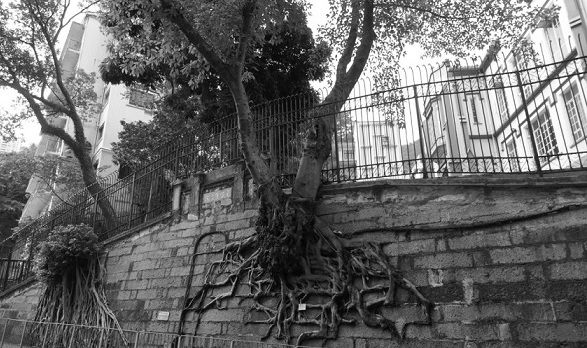
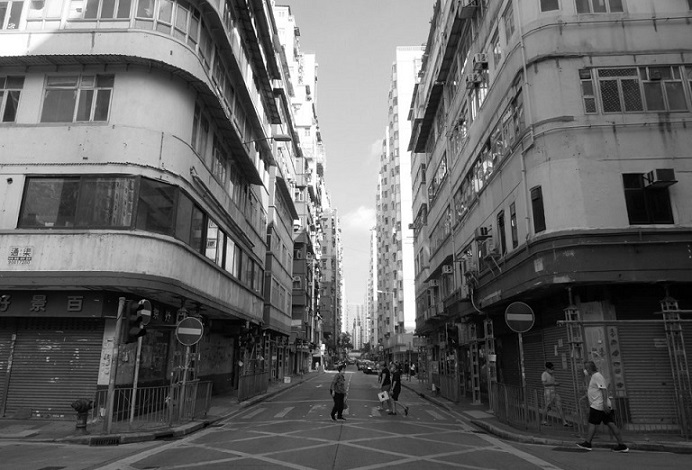
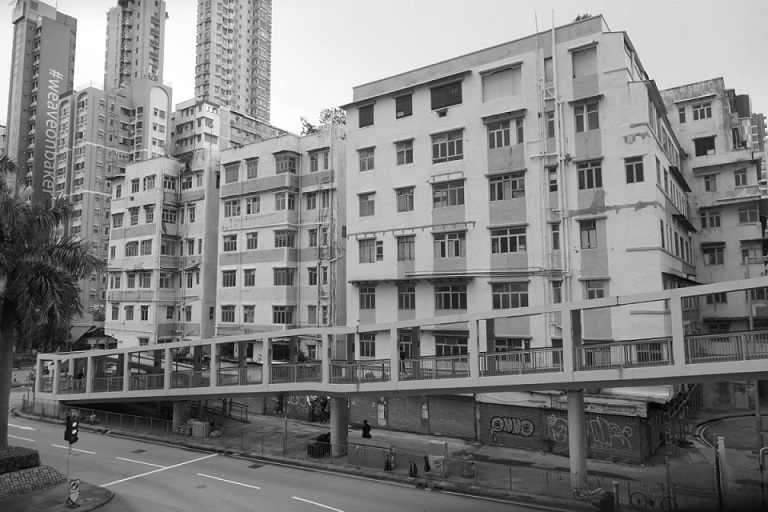
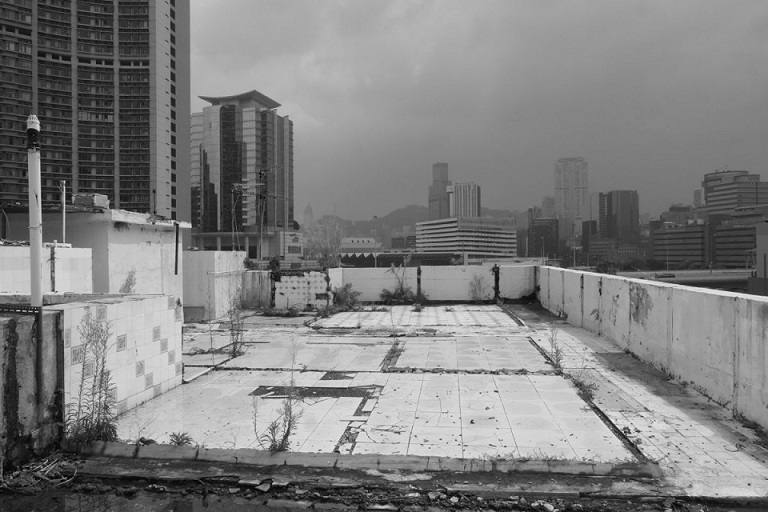
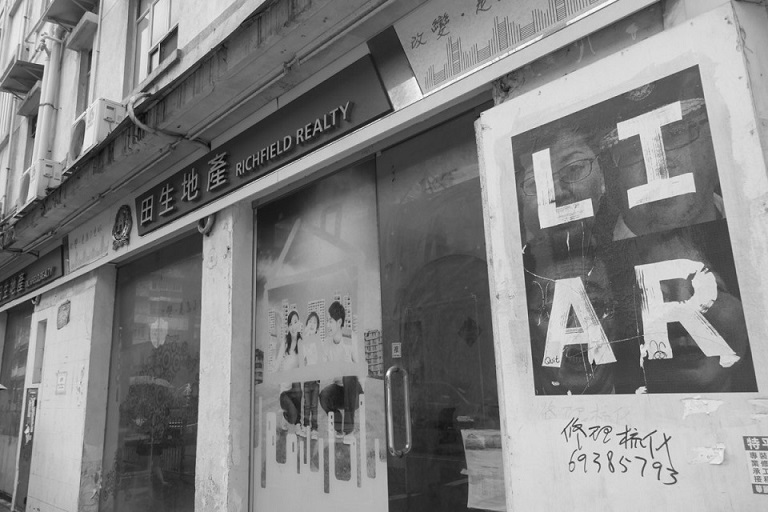
圖片說明:
1. 2020年8月31日,香港,中環,歷史悠久的主教山和前港中醫院(左)、會督府(右)和面向動植物公園的景貌
2.-3. 2020年8月23日,香港,九龍,紅磡,有待清拆的建築物
4. 2020年8月30日,香港,九龍,紅磡,已清拆的天台屋和新的住屋、紅磡站、香港體育館,背景為港島
5. 2020年8月30日,香港,九龍,紅磡,有待清拆的建築物中,除可看到田生地產的舊辦公室,還有2019年反政府示威留下的海報
所有照片由作者提供
Captions:
1. Historic Bishop Hill with former Central Hospital (left), Bishop’s House (right) and view towards Botanical Gardens, Central, Hong Kong, 31 August 2020
2.-3. Residential blocks awaiting demolition, Hung Hom, Kowloon, Hong Kong, 23 August 2020
4. Demolished rooftop flats & new housing, Hung Hom Station, Hong Kong Coliseum, and view of Hong Kong island in background, Hung Hom, Kowloon, Hong Kong, 30 August 2020
5. Former Richfield Realty office in building awaiting demolition, with remnant of 2019 anti-government protests’ poster, Hung Hom, Kowloon, Hong Kong,30 August 2020
All photos: John Batten
(Please scroll down for English version)
政府山關注組由一群以行動守護城市規劃及文化保育的人士組成,小組上星期聯同居民和其他反對人士繼續推動中環主教山文物區的規劃限制。我們再次在「進一步申述」的最後一場公聽會聚首,這個法定規劃程序在兩年多前首次在城市規劃委員會中展開。政府山關注組在上一次城規會公聽會上建議,整個主教山範圍應設下海拔80米的高度限制,而區內所有新發展或現有建築物的修改都應先經過公眾規劃諮詢,再由城規會作最後審批。城規會在去年12月同意了我們的建議,並認為這些涵數可以有效制衡,一方面保育範圍內的文物,另一方面讓聖公會有機會適當地在該區發展。
上週五的規劃公聽會可以是困難重重的,因為儘管法定程序尚未完成,但聖公會已就去年12月的決定提出司法覆核。而我們最初擔心的,是規劃署和城規會委員中,有不少人決意確保能全面討論聖公會的角度,包括提高許可高度,還有一項反建議,列明城規對於主教山區的未來發展和現有建築物的修改並無規劃督導權。
在更廣泛的討論中,城規會委員促請文物保育專員和規劃署官員解釋聖公會主教山計劃的歷史。當中簡述了2011年時,聖公會獲准興建大型社區中心,把這個主要文物範圍分成兩區,分別可建高達103和108米的建築物。雖然聖公會這項計劃重發展多於重保育,但已獲行政長官會同行政會議通過,該計劃屬於當年「保育中環」政策的一部份,這項政策由時任行政長官曾蔭權和時任發展局局長林鄭月娥制訂。
這項批准為聖公會帶來了意外的主教山發展機會,因為當時未有公眾討論在這個容易被損壞的文物地點興建高樓的影響,也沒有人考慮過行人連接和通往該區的問題,更沒有人提及設計、文化傳承和綠化上的兼容性,以及可能出現的交通擠塞問題。聖公會在計劃上拖延了一段時間,其後放棄了社區中心的想法,決定以樓高135米的醫院取代。然而,這項計劃並沒獲得政府正式批准––計劃有需要再次重新討論。時間過去,而委聘進行保育規劃、交通運輸研究和就興建醫院制訂財務規劃的問題並沒有進展。幾年過去了,民主派區議員也提出不過不少關於這所醫院的問題,但我們在城規會公聽會上得知,即使醫院的發展會對中區基建造成衝擊,但聖公會甚至未有出席區議會會議。
也許政府已等得太久,也許在去年連場反政府示威後,興建大樓來俯視上亞厘畢道行政長官居所的情景實在難以接受。不論原因為何,我們看到了事件中的態度改變,其中可能與政府山關注組提交的文物保育主導考量相關。上星期五,城市規劃委員會現時對規劃限制提出了正式支持,可確保主教山的文化氛圍不會被新發展蓋過。
這是個對香港有利的好決定。聖公會現在應該好好細味主教山的精彩歷史,並放棄任何司法覆核。如果仍在構想任何發展,便應保持謙遜低調。教會的訓導對謙遜低調有很多好的例子!
公聽會數天後,我約了朋友在紅磡和土瓜灣一帶走走。雖然中環的殖民時代建築物得到保留,但九龍戰後蓬勃發展的平實民居卻沒有不一樣的結局。
紅磡區內的單位都藏身於一幢又一幢的大樓內,現在卻是十室九空。站在很遠已可以看到不少樓宇正等待清拆的端倪:店鋪關門大吉、本來裝有冷氣機的窗戶空空如也,留下的支架仿如曾受襲擊的動物,成為獵物被吃掉後,遺體被蒼蠅搶吃。非法的天台屋已被一一清拆。接下來,化身地產發展商及/或市區重建局的禿鷲將把餘下來的通通拆毀。政府恢愎私人物業和發展商積累物業的步伐是逐步慢慢來的,一拖就是幾年。但是如果田生地產「鼓勵」業主出售物業,而樓梯照明和其他公用服務截斷,令居住環境越來越差的話,過程會較快一點。
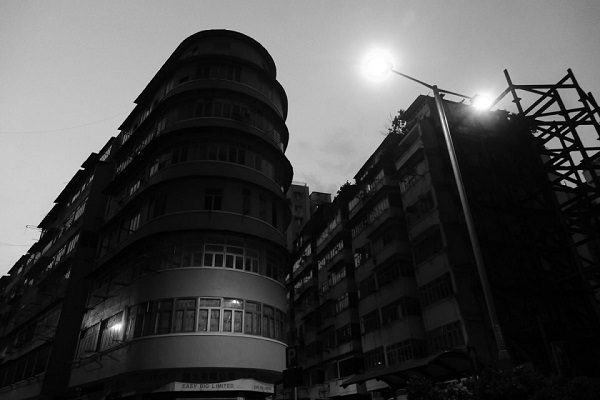
2020年8月30日,九龍.土瓜灣,有待清拆的轉角建築物「順大有限公司」。照片由作者提供
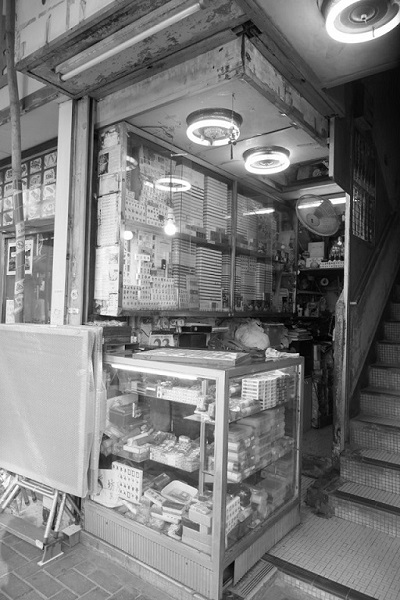
2020年8月23日,香港,九龍,紅磡,在一幢唐樓樓梯下開業60年的金發麻雀。照片由作者提供
我最喜歡土瓜灣啟明街的圓角建築物。很多年以前,我會在位於轉角處的餐廳坐坐,在炎炎夏日選個室外位置來喝杯冷飲和吃碗麵。那間餐廳早已結業並由其他公司取代,但寫著「順大有限公司」的招牌仍然留下,就像是大廈和整個地區宿命的提要。雖然去年的示威中有人提出應處理貧富懸殊的問題,但地產發展商基本上仍然很順利,也很大權地改變著城市面貌,不斷大量製造中產住屋;但是,香港仍然需要低成本住房來取代城中臭名遠播的籠屋和劏房。
原文刊於《明報周刊》,2020年9月4日
Big and Easy, for Some
by John Batten
Last week, the Government Hill Concern Group (GHCG), a composite group of urban planning and heritage conservation activists, joined residents and other objectors to continue the push for planning restrictions for the Bishop Hill heritage site in Central. We gathered again at the final public hearing for ‘further representations’ in a statutory planning process first heard by the Town Planning Board more than two years ago. The GHCG had proposed at a previous TPB hearing that the entire Bishop Hill site have a height restriction of no higher than 80 metres above sea-level (80mPD), and that any new development or alteration of the site’s buildings must first go through a public planning consultation with final approval of the Town Planning Board. Last December, the TPB agreed with us. They agreed that these parameters would offer a good check to preserve the heritage of the site, and, a balance to allow the Sheng Kung Hui (the Anglican Church) opportunities to appropriately develop the site.
Last Friday’s planning hearing was potentially difficult as the Sheng Kung Hui had applied for a judicial review challenging last December’s decision, despite the statutory process still being incomplete. However – and, we were initially worried – there was resolve from the Planning Department and TPB Members to ensure a full discussion on the Sheng Kung Hui’s point of view, including discussing a higher allowable height and a counter-proposal that the TPB have no planning oversight on future developments and alterations to the site’s existing buildings.
In a wide-ranging discussion, the TPB Members pressed the Heritage Commissioner and Planning Department officers to explain the history of the Shek Kung Hui’s plans for Bishop Hill. It was outlined that the Sheng Kung Hui had been given permission in 2011 to construct a large community centre, with the site being divided into two zones allowing building heights of 103m and 108m respectively. The Chief-Executive-in-Council approved this scheme as one of the key heritage sites of the ‘Conserving Central’ policy formulated by then-Chief Executive Donald Tsang and then-Development Secretary Carrie Lam – despite Sheng Kung Hui’s plans being development rather than heritage-led.
This permission gave the Sheng Kung Hui a fortuitous opportunity to develop Bishop Hill as there had been no public discussion of the implications of constructing high-rise buildings on this fragile hillside heritage site; nor any consideration of pedestrian connectivity, site access, design compatibility with the heritage and greenery, and potential traffic congestion. The Sheng Kung Hui procrastinated over this plan and later abandoned the community centre idea, deciding that a 135metre tall hospital should be built instead. However, this plan did not have official government approval – some negotiations needed to begin again. Time went by and such issues as commissioning a conservation management plan, a traffic study and developing a financial plan to actually construct the hospital were not taken forward. Years went by, and questions about the hospital were asked by pro-democracy councillors in the District Council – often, as confirmed by councillors at the TPB hearing, the Sheng Kung Hui did not even attend Council meetings, despite the hospital development impinging on other Central district infrastructure.
Maybe the government was tired of waiting, maybe the prospect of a huge building hovering over the Chief Executive’s Upper Albert Road residence was unpalatable after last year’s anti-government protests. Whatever the reasons, there was a shift in attitude, partially prompted by the GHCG’s considered alternative heritage-led submissions. Official support through the Town Planning Board now backed planning restrictions to ensure Bishop Hill’s heritage ambience were not overwhelmed by any new development. Last Friday, this was confirmed.
It is a good decision and good for Hong Kong. The Sheng Kung Hui should now appreciate the site’s fabulous history and abandon any judicial review. If any development is contemplated, keep it modest. The teachings of the church have lots of examples of this approach!
A couple of days later, I met a friend for a walk around Hung Hom and To Kwa Wan. If the colonial buildings of Central will be preserved, the honest residential housing of Kowloon’s post-war boom years will not.
In Hung Hom, flats are lined-up in blocks, now emptied of families and businesses. From a distance, the tell-tale sign of impending demolition is there: shuttered shops and air-conditioners removed from windows, their skeletal supports left like an animal attacked, eaten by prey, the remains picked over by flies. Already, the illegal rooftop flats have been demolished. Later, vultures in the form of property developers and/or the Urban Renewal Authority will demolish the rest. Government resumption of private property and developers’ property accumulation is gradual and incremental. It takes years, but quicker if Richfield Realty ‘encourages’ owners to sell and properties become less habitable when staircase lighting and other services are disconnected.

(‘Easy Big Limited’), corner building awaiting demolition, To Kwa Wan, Kowloon, Hong Kong, 30 August 2020. Photo: John Batten

Kam Fat Mahjong, located under a tong lau staircase for 60 years, Hung Hom, Kowloon, Hong Kong, 23 August 2020. Photo: John Batten
The round-cornered building on Kai Ming Street in To Kwa Wan is a favourite – years ago, I would stop at the restaurant situated on the corner for a cold drink and a bowl of noodles, sitting at an outdoor table on a hot summer’s day. The restaurant has gone, as has the replacement business, but its sign remains: ‘Big Easy Limited’ sort of sums up the building’s and the area’s fate. Despite last year’s protests, including demands for the gross gap between rich and poor to be tackled, property developers still have it big and reasonably easy to fundamentally alter the urban landscape with mass middle-class housing, whereas lower-cost housing to replace the city’s notorious cage-homes and subdivided flats is also needed.
This opinion piece was originally published in Ming Pao Weekly on 4 September 2020, translated from the original English by Aulina Chan.
